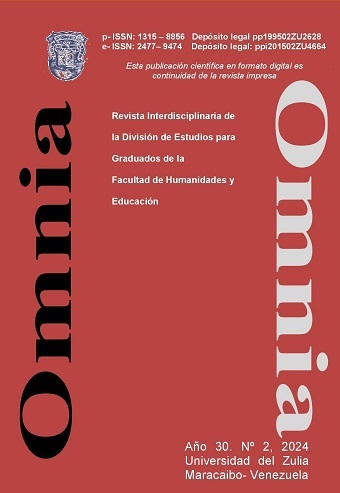Virtual reality as a learning strategy in Maracaibo, Venezuela school
Abstract
As the world continues to embrace digital transformation, the field of education is not far behind. Virtual reality (VR) is the creation of a simulated environment with a totally real appearance that allows a person to be transferred to any place or situation they want, with the illusion of being within this environment. This research focused on demonstrating that virtual reality works as a learning strategy, where students are involved in learning through a computerized simulation with images and videos that create in the user the sensation of being immersed in the environment it presents. The video, viewed through a device known as a virtual reality headset or glasses. The research has been carried out based on the basic applied and experimental methodology. A total sample of 24 students was taken, which were separated into two groups of 12 people each, while one group watched a traditional biology class on slides, the other watched the same class using VR, at the end they were given a test. Written with the goal of demonstrating which group performed best in a range of 0-20. The traditional class obtained 13 points as a result, on the other hand, the VR class had an average of 16.33. Once these results have been analyzed, it is concluded and demonstrated that Virtual Reality can be applied as an alternative, educational and effective method, presenting notable changes in academic performance.
Downloads
References
Arraez, David (2016). La realidad virtual en las aulas: ¿Realidad o virtual?. Educación 3.0. Disponible en: https://www.educaciontrespuntocero.com/noticias/realidad-virtual-aulas-educacion/
Castañares, Wenceslao (2011). Realidad virtual, mímesis y simulación. CIC. Cuadernos de Información y Comunicación, 16. 59-81. ISSN: 1135-7991. Recuperado de: https://www.redalyc.org/articulo.oa?id=93-521629004.
Dabbagh, Nada, Fake, Helen y Zhang, Zhicheng (2019). Student Pers-pectives of Technology Use for Learning in Higher Education. RIED. Revista Iberoamericana de Educación a Distancia, 22(1), pp. 127-152. doi: http://dx.doi.org/10.5944/ried.22.1.22102.
Fernández, Ruben, González, David y Remis, Saul (2012). De la reali-dad virtual a la realidad aumentada. Material de lectura, Open DC. Disponible en: http://fido.palermo. edu/servicios_dyc/opendc/archivos/4674 open.pdf.
Ferreira, Regivaldo Sousa, Xavier, Rogerio Aparecido y Ancioto, Alex Sandro (2021). La realidad virtual como herramienta para la edu-cación básica y profesional. Revista Científica General José María Córdova, 19(33), 223-241. http://dx.doi.org/10.21830/19006586.728.
Michaelis, Carolina y Michaelis Henriette (2020). Dicionário brasileiro da língua portuguesa. https://michaelis.uol.com. br/moderno-portugues/
Tori, Romero, Hounsell, Marcelo da Silva y Kirner, Claudio (2018). Realidade virtual. Introdução a Realidade Virtual e Aumentada (pp. 9-25). Editora SBC.
Morán, José (2015). Mudando a educação com metodologias ativas. Convergências midiáticas, educação e cidadania: aproximações jovens. Coleção Mídias Contemporâneas. Consultado en: http://www2.-eca.usp.br/moran/wpcontent/uploads/2013/12/mudando_moran.pdf
Otero, Aantonio y Flores, Julian (2011). Realidad virtual: Un medio de comunicación de contenidos. Aplicación como herramienta educa-tiva y factores de diseño e implantación en museos y espacios pú-blicos. Revista ICONO. 14. 9(2), 185. https://doi.org/10.7195/ri14.v9i2.28





